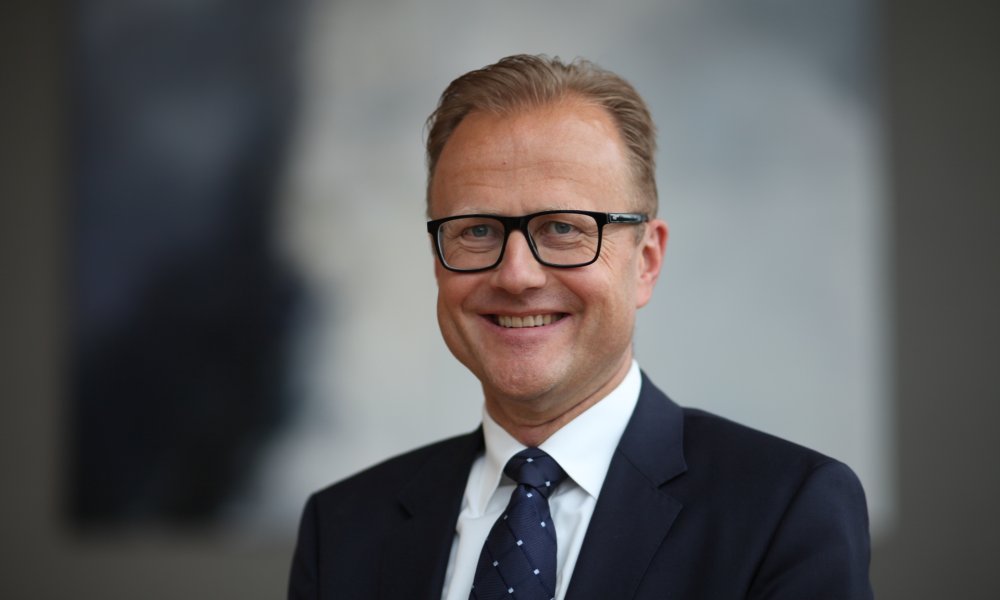At a time when the EU’s Omnibus legislation is in danger of sacrificing sustainability for the sake of efficiency and the Trump Administration is pursuing its anti ESG agenda, it is easy to lose faith and fear the worst. For Dagfin Norum, CIO and Head of Fixed Income at Storebrand Asset Management however, the ongoing pushback is only the latest iteration of what he sees as a pendulum that swings back and forwards towards and away from sustainability.
“ESG keeps on being declared dead but it never really dies. Our focus lies on our fiduciary duty and to deliver best possible risk-adjusted returns for our clients. Integration of ESG factors into the investments process contributes to our ability to fulfil that duty, so I find it difficult to argue against ESG from that point of view. ESG provides us with more information, which allows us to gain better understanding of our investments”, Norum says.
“It is possible that EU regulations and reporting requirements may have gone a bit too far. It is very demanding and resource intensive, both for investee companies as well as for us investors. It is crucial that decision makers find a path towards a better balance,” he adds.
Sustainable Fixed Income in Storebrand
Storebrand AM manages NOK1.442 billion in assets as of 1Q25, of which 31% correspond fixed income investments. The main channel through which Storebrand AM invests in sustainable fixed income instruments is through green bonds across all portfolios, but also dedicated through Storebrand Green Bond Fund, which is classified as an Article 9 fund under the EU’s Sustainable Finance Disclosures Regulation (SFDR). The fund was valued at SEK 11.1 billion, at the end of May 2025.
“We have looked into sustainability bonds, social bonds and sustainability-linked bonds, but most of our focus remains on green bonds, where there are more clearly defined and established standards from the ICMA as well as the EU Green Bond Standard. We find it better to invest in sustainable assets that have more standardisation than in those that do not”
Addressing ESG data Limitations
All sustainable investors know that the most fragile aspect of ESG remains the availability of useful and reliable data on environmental, social and governance factors.
“We try to mitigate the limitations around ESG data by purchasing it from several third-party data providers, which we combine to create the best possible view of the ESG risk underlying the portfolio,” Norum explains. “Beyond that we can also talk with the individual companies and request more information or clarifications and conduct our own analysis.”
“When we analyze our investments we divide it into two parts: the sustainability risk and the sustainability opportunity. This allows us to consider whether companies are most at risk, but also which are best positioned to deal with environmental and transition issues”, Norum explains.
Despite the extra hurdles facing investors in private markets, Norum argues that private credit markets may be considered more transparent than their public counterparts.
“Private credit investors, by virtue of the market, tend to engage with smaller companies. We run most of our private credit investments through external managers. When we select those managers, we focus on their awareness, their experience, their existing portfolios and whether this match what they have been saying.
“Requiring ESG disclosures can be useful in private markets in general as they can push us to seek out more information directly from the company on a board-to-board basis, which will be harder, but possible to obtain in most cases. In that sense, and despite the more pervasive absence of data in private markets, one can make the argument that private markets can be even more transparent, given the right of engagement”
Green Bond Fund: From Niche to Mainstream
Storebrand recently marked the 10-year anniversary of launching the world’s first commercial green bond fund, inspired by the World Bank’s 2008 issuance. Since its inception in 2015, the fund has grown to SEK 11 billion (US$1.1 billion) in AUM, Sweden’s largest, and outperformed its benchmark with more than 5% over five years as of May. The fund backs projects like energy-efficient housing, bike lanes, and train links. It has also expanded to areas such as aluminium recycling, electric trucks, and supply chain decarbonization. Real estate remains central, with green bonds supporting the sector’s vital role in the energy transition.
“Global sustainable bond issuance has surged past US$1 trillion annually, with cumulative green bond volumes reaching US$3.5 trillion by end-2024. The market now spans many sectors, supported by frameworks like the ICMA’s Green Bond Principles and the European Green Bond Standard, enhancing transparency and reducing greenwashing”
“As sustainability becomes embedded in mainstream investing, dedicated green bond funds may fade, but their legacy of driving transparency and climate-conscious finance will remain. Green bond funds have not only driven the transition but also laid the groundwork for a more environmentally conscious fixed-income market. We remain steadfast on both our approach and commitment to sustainable investments”, Norum concludes.







